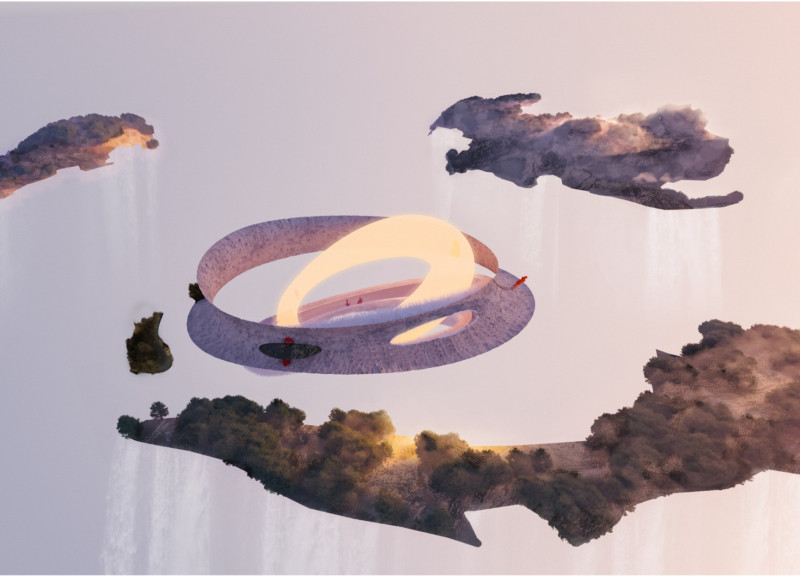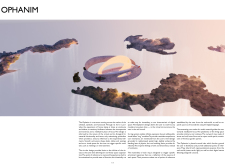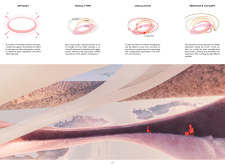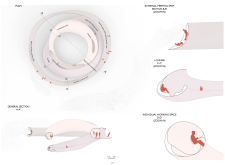5 key facts about this project
The Ophanim combines celestial, symbolic, and functional elements to create an engaging space. It is designed to act as an enclosure, a transitional area, and a meditative focal point. Set within a virtual context, it emphasizes the importance of symbolism, allowing users to connect deeply with their surroundings while moving away from traditional approaches to material use.
Circular Form as a Design Element
The circular shape of the Ophanim plays a vital role in defining user experience within the vast open environment. This geometry allows for non-linear organization, giving users the ability to move effortlessly among various functional areas. By placing individuals at the center, the design encourages a natural flow and connection, challenging conventional architectural movement.
Adaptive Ring System
The project features an innovative ring system that accommodates growth through the addition of offset modules. This flexibility allows the space to adjust to the needs of its users, facilitating various interactions. By minimizing visible mechanisms, the design promotes a sense of immersion in the space, enhancing the overall experience.
Material Considerations
While the emphasis is on symbolic and experiential elements, material choices help reinforce the project’s objectives. The core is made of washi material, which supports meditative focus for users. The outer ring employs stone and soil, fostering an open social area that encourages plant growth and reflects the feel of gathering spaces in nature.
Spatial Zones and User Interaction
The careful arrangement of different zones within the Ophanim creates specific areas for working, relaxing, and socializing. Each zone operates independently yet contributes to a unified user experience. Encouraging exploration, the design supports interactions between people and their surroundings. This thoughtful organization highlights functionality while enriching the overall journey.
In the end, the design invites quiet reflection at its core, while the surrounding spaces promote community and collaboration. This attention to detail creates a rich environment that connects users to their architectural setting.





















































